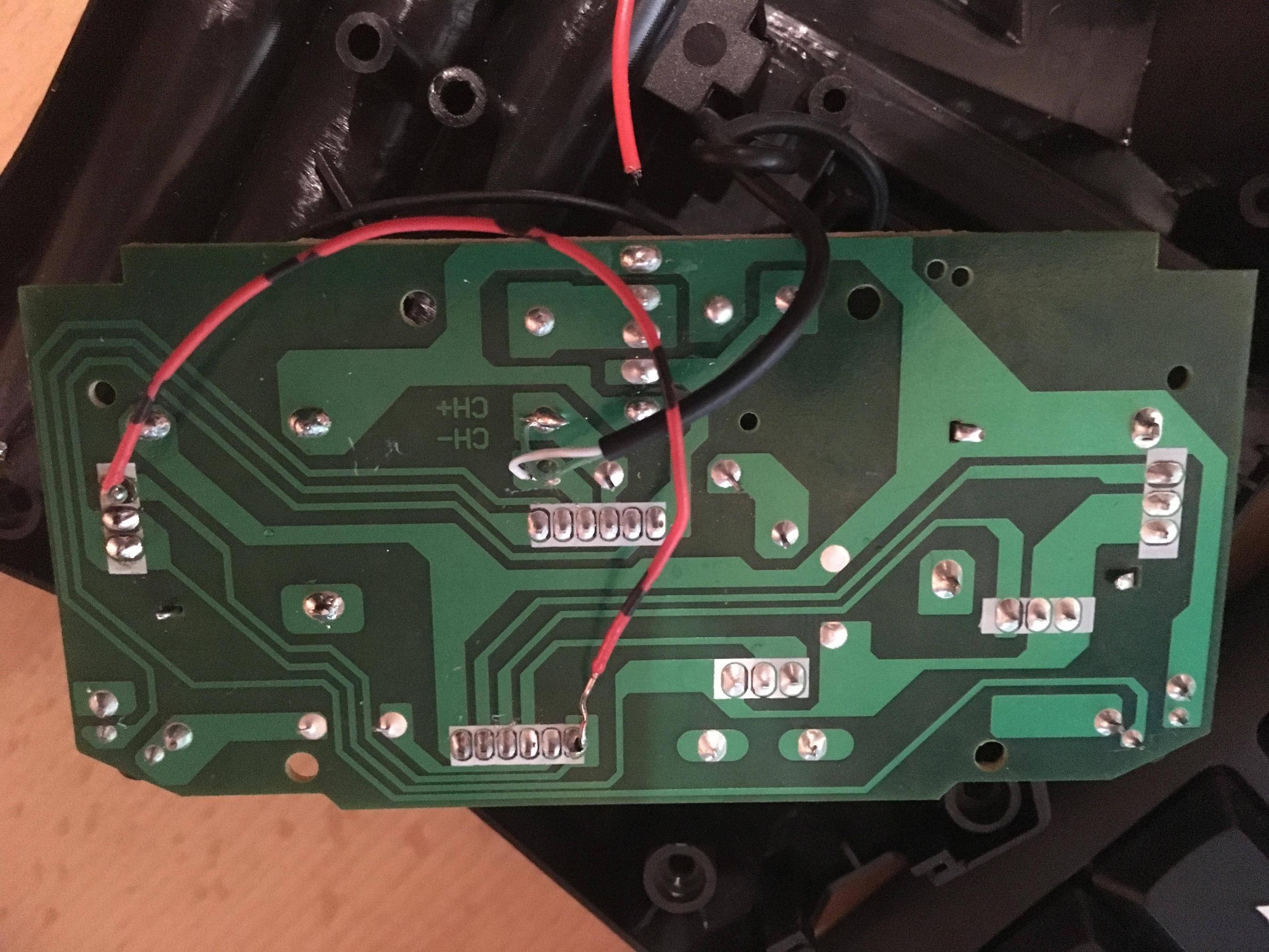I bought a little toy helicopter, namely the Revell Control 23982. After flying a few batteries I was wondering whether I could hack it in such a way, that my Arduino Uno can control/manipulate the signals from the transmitter to the receiver on board. However, to me it seems like I have big trouble getting started on the right path. Can anyone spot out my mistakes?
Hardware hack
My first attempt was to bridge the potentiometers in the transmitter with the Arduino, this did not work at all. I think this is because the Arduino is using PWM and no true DC. Also I do not understand how the potentiometer (shown in the picture) works, where two of the three terminals are connected to each other.

NOTE: The soldered cable is a result of some unsuccessful hardware soldering.
EDIT
Here is further information according to @combos comment.
NOTE: The diagram is missing a connection between the line that connects all potentiometers and a 3v pin on the IC. Sorry for that.
This is a simple excerpt of the actual PCB, however, it should be the one which is important for my question. It is true that two terminals of the potentiometers are connected, and all the potentiometers are additionally soldered to ground via their housing. I was not able to find any information about the IC labelled "???". It contains the transmitter, that is clear.
A test with my multi-meter showed, that there is a maximum current flow of three volts on the single line of each potentiometer, and the connection between all of them is 3v consistent.
Software hack
My second attempt was trying to reverse engineer the 2.4GHz transmission via an nrf24l01 module, as some other people on the internet have been successful doing this with some other toys. I tried to scan the frequency bands, however with no successful outcome. I have no clue which transmitter module is being used on the board.
TL;/DR;
My questions:
- Is it even possible to achieve what I want?
- If yes, what do I need to do?
- If not, what did others do to achieve this kind of behaviour?
- Which circuit do I need to convert digital PWM in analog?
If you need any additional information please let me know!
